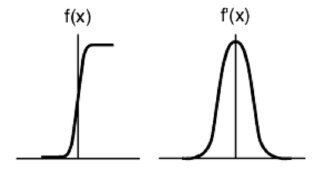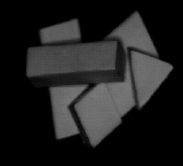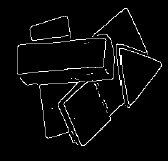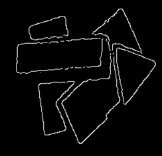
Differentiation involves measuring rate of change when one quantity varies with respect to another.
Line:
The slope of a line gives the rate of change of the variable on the y-axis with respect to the variable on the x-axis.
y = mx +c (where m = slope)
But, in the real world, it is not always a straight line that we have to deal with. Take for example, a curve.
Curve:
The slope of a curve at a point = slope of the tangent at that point
As we move along the curve the slope of each tangent changes, i.e. the rate of change of y with respect to x.
The method of finding the slope of the tangent to the curve at any point on the curve is called differentiation.
1st Derivative:
![]()
Remember: you multiply by the power and reduce the power by 1 (short-hand rule)
2nd Derivative:
![]()
Relevance?
In computer imaging differentiation is used to detect the edge of an image by detecting changes in the intensity of the image. Edges in images are areas with strong intensity contrasts - a jump in intensity from one pixel to another i.e. a rate of change of the pixels. Edges are often used in image analysis for finding region boundaries. Edge detection of an image significantly reduces the amount of data and filters out useless information, while preserving the important structural properties in an image.
First Derivative:
The edge lies between the background and the foreground of an image. It appears as a white line. If drawn as a graph it only has one peak.

Second Derivative:
The second derivate gives us two peaks on a graph. It produces double edges. One black and one white. It produces much 'noise' therefore the image is not very clear. A model of this is called the Laplacian operator. This is based on the technique our eyes use. Image sharpening makes the edges steeper - the sharpened image is intended to be observed by a human. However, our eyes don't give us background noise, therefore, they must be doing something else as well - filtering out the noise but we don't know how..

| Original Image | 1st Derivate | 2nd Derivate |
 |
 |
 |